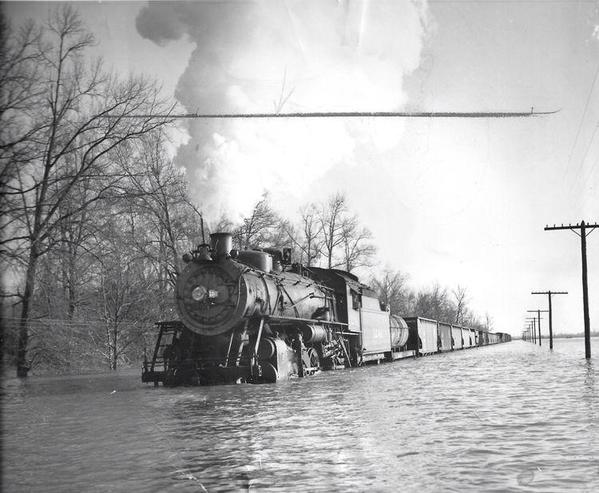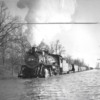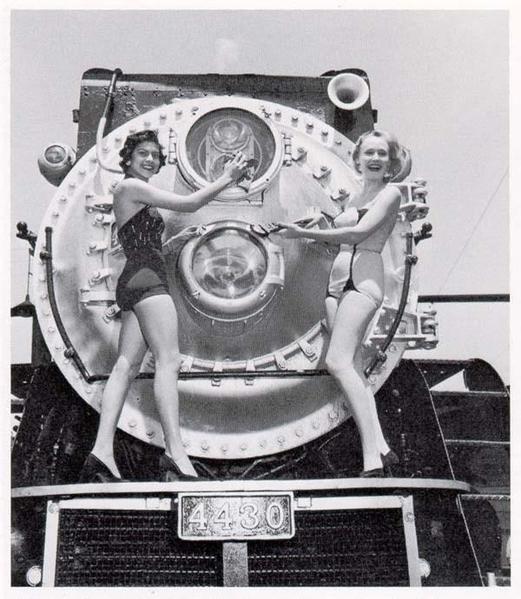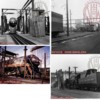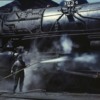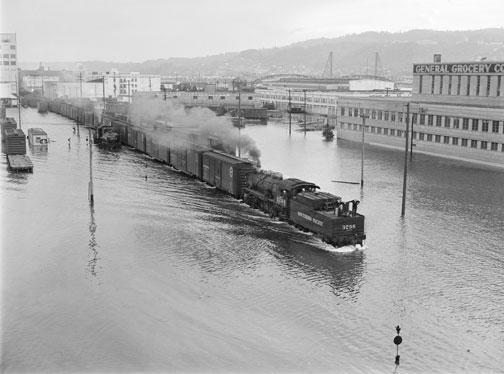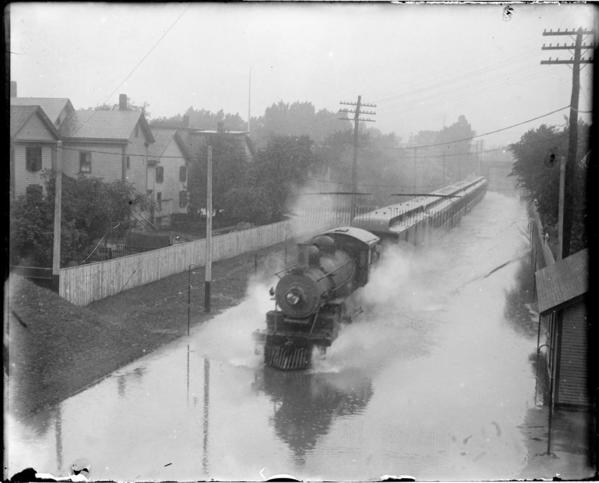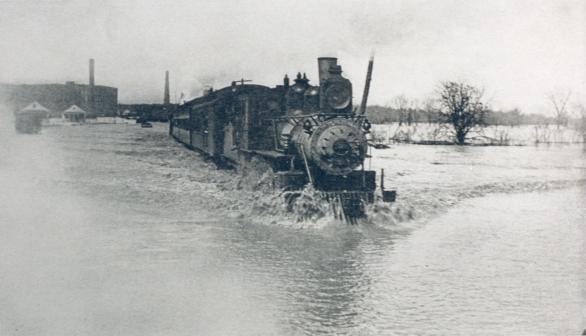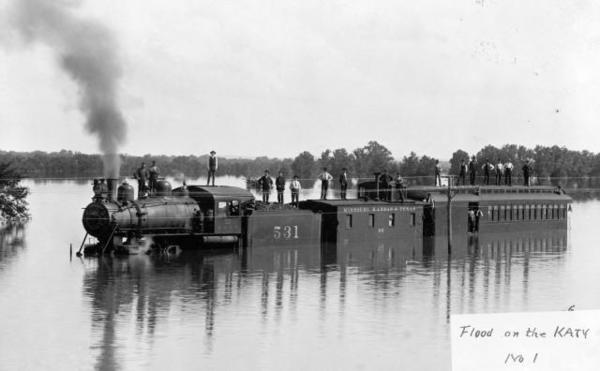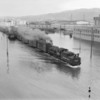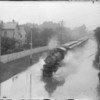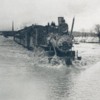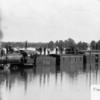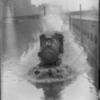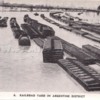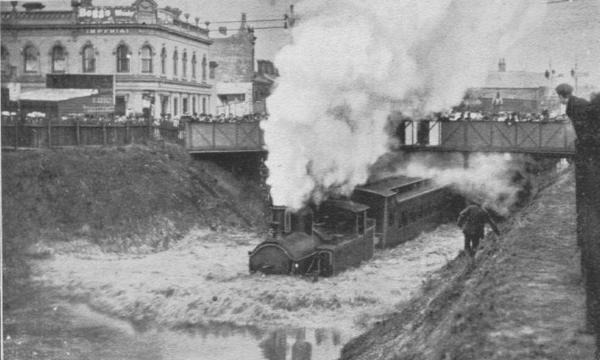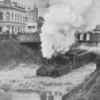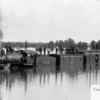We know you can land a helicopter in a lake, pond or river and get out and wash it. Is the same procedure used to wash steam locomotives? John
Replies sorted oldest to newest
Driving through a flood doesn't do the wheel bearings any good. But a steamer can get through higher water than a diesel-electric with low-slung traction motors.
It's easier to launder a loco on high ground with a spray washer. Do you wash your car or helicopter in a pond?
with a spray washer A lot of locos have steam fittings on them for plugging in a hose for just that purpose. Even some of the live steamer models have this feature. Russ
Attachments
ChiloquinRuss posted:with a spray washer A lot of locos have steam fittings on them for plugging in a hose for just that purpose. Even some of the live steamer models have this feature. Russ
this is a dangerous practice, though. you're locomotive will look shiny, but you may also succeed in stripping away lubrication from bearing surfaces.
overlandflyer posted:ChiloquinRuss posted:with a spray washer A lot of locos have steam fittings on them for plugging in a hose for just that purpose. Even some of the live steamer models have this feature. Russ
this is a dangerous practice, though. you're locomotive will look shiny, but you may also succeed in stripping away lubrication from bearing surfaces.
That's why you "oil around" afterwards. It's all part of servicing between runs.
I don't think any mainline steam locomotive "hit the road" immediately after being washed like we do when we pull out of the local car wash.
Rusty
Steamers need an interior, that is, boiler, wash more than an outside one.
overlandflyer posted:ChiloquinRuss posted:with a spray washer A lot of locos have steam fittings on them for plugging in a hose for just that purpose. Even some of the live steamer models have this feature. Russ
this is a dangerous practice, though. you're locomotive will look shiny, but you may also succeed in stripping away lubrication from bearing surfaces.
"Dangerous?" Not really. It was a common practice. As Rusty points out, you are constantly re-applying lubrication anyway.
The more I think about it, except for the crosshead guide and the Walschearts or Stephenson link, most of the bearing surfaces on a steam locomotive are pretty well hidden and protected. Think about the driver axle boxes, for instance: they are completely protected by the wheel center. The drive rod pin surfaces are also protected.
When I worked as a mechanic in a bicycle shop in the 80s, we told customers not to spray their bikes down with a hose to wash them, and that was good advice, because you could wash out the lube. I don't think a steam jet poses the same problem on a steam locomotive.
I remember reading something somewhere about limited operation of streetcars and diesel locomotives in flood conditions, but the steamer would have the biggest advantage. The big thing would be watching for track washouts. Now that would be a cloud of steam, and then some.
Steve is exactly right. One of the first things done after a long days run (either 4449, 844, or 3985) was to wipe down the rods with rags soaked in mineral spirits. The dirty rags were placed in a 5 gallon bucket, and used to fire up the next morning.
For a "full wash", starting at the top of the boiler jacket, water and detergent (Dawn seems to work best for cutting oil & grease), the entire locomotive & tender is hand washed/brushed and rinsed. The running gear is done last, sometimes with a "Hotsie" (diesel fueled fired small flash boiler with a high pressure pump), which blows off all the road grime and grease slung off the rods. After washing the running gear, the polished rods are all wiped down, and the all the rod bearings and valve gear components are greased, both hard grease and soft grease where applicable.
Back in 93 when 765 was running it's last season, we washed the engine and tender down with kerosene overnight so it was shiny the next morning for the railfans.
Scrub-a-dub-dub...
It was fairly common practice to put a steam locomotive through a wash rack. Also, one of Pentrex's Big Boy video's show a Big Boy being pushed through a wash rack by an 0-6-0.
Rusty
Attachments
Hot water, if the loco had been run all day, why would rags be needed to fire up the next day? I would think that a banked coal fire should burn all night.
They actually used Dawn on steam locos? My wife would say, "I told you Dawn is best for cutting grease."
RJR posted:Hot water, if the loco had been run all day, why would rags be needed to fire up the next day? I would think that a banked coal fire should burn all night.
SP 4449, UP 844, and UP 3985 are all oil burners. Thus the fire is shut off at night.
They actually used Dawn on steam locos? My wife would say, "I told you Dawn is best for cutting grease."
Tell her she is indeed correct. Dawn is absolutely the BEST "grease cutter" detergent we have ever used.
There is a missing piece to this 'washing' puzzle. Steam engines use steam cylinder oil that is INJECTED along with water to make steam. So when washing down with the steam produced by the locomotive it is NOT just hot water. On the live steam models we just pour a cap or two into the tender after a water fillup.
Green-Velvet-Light-Steam-Cylinder-Oil
BTW because of there being a little bit of oil in the steam mist, and you are running at a track where there are a lot steamers running, by the second or third day of a meet the grades become VERY interesting! ![]() At our 2015 Triennial Meet we had 350 engines with over 120 of them steamers. A lot of fun (and just a little slick)! Russ
At our 2015 Triennial Meet we had 350 engines with over 120 of them steamers. A lot of fun (and just a little slick)! Russ
Some of what our friends across the Atlantic would do. I have this on a wonderful DVD set, and love watching it!
ChiloquinRuss posted:There is a missing piece to this 'washing' puzzle. Steam engines use steam cylinder oil that is INJECTED along with water to make steam.
No, that is not correct. There is absolutely NO oil "injected" into the boiler, nor is the water boiled in the boiler containing any such thing as "steam oil", as that would cause foaming within the boiler.
The "steam oil" (correctly referred to as 'valve oil') is injected into the flow of steam from the locomotive's throttle thru the short steam pipes to the valves. Valve oil thus lubricates the valves, as well as the main cylinders/pistons. On larger main line steam locomotives, valve oil is injected into the steam flow just prior to the valves, plus directly into the main cylinders.
So when washing down with the steam produced by the locomotive it is NOT just hot water.
Yes it is just hot water, which flashes to saturated steam upon reaching atmospheric pressure.
On the live steam models we just pour a cap or two into the tender after a water fillup.
You may be pouring "a cap or two" of boiler water treatment chemical, but you had better NOT be putting oil in the tender water.
Green-Velvet-Light-Steam-Cylinder-Oil
BTW because of there being a little bit of oil in the steam mist, and you are running at a track where there are a lot steamers running, by the second or third day of a meet the grades become VERY interesting!

That is because the valve oil has been vaporized and is in the spent steam exhausted from the cylinders. Also why live steam operators get that snot all over their faces!
At our 2015 Triennial Meet we had 350 engines with over 120 of them steamers. A lot of fun (and just a little slick)! Russ
Hot Water: Thank you for educating my husband, that I'm always correct.
----Mrs. RJR
ChiloquinRuss posted:... At our 2015 Triennial Meet we had 350 engines with over 120 of them steamers. ...
ok, i'm going to have to call you out on this one. i was home watching trains pass the tower camera location and i saw diesels outnumber steam by at least 8:1. i don't really blame live steamers, though. with the limitation of running for coal and oil (fire prevention), only a diesel (and propane fired steam for now, though i heard those are going to be banned from the north side in time, too) can travel around the entire track.
Eddie Marra posted:Some of what our friends across the Atlantic would do. I have this on a wonderful DVD set, and love watching it!
That's an interesting authentic educational video, thanks for posting.
After 12 to 16 days of service, loco 73020 spent 27 hours getting its boiler cleaned out, tubes scrubbed, then serviced and steamed up and ready for operation again. That illustrates the maintenance-intensive nature of steam locomotives, which led to their ultimate demise. 41 plugs to be removed for boiler wash-out! Maybe the Brits were more concerned about boiler efficiency to reduce coal consumption?
Every kid wants to be an "engine driver", but it takes a lot of maintenance people doing unglamorous work in the background to keep those machines in operation.
RailRide posted:
I think the railroads were aware of what needed to be done at times like that...
Of course, there were times that even the mighty steam locomotive would not be able to handle a little water:
Maybe a GE U-Boat in this instance?![]()
![]()
![]()
Rusty
Attachments
Attachments
Where there's smoke there's fire?????
I recall reading that a midwest railroad kept a few steamers after it dieselized just because it had occasional flooding, that would affect traction motors.
diesels outnumber steam by at least 8:1 120 steamers, 131 gasoline powered diesels, and 101 battery powered electrics (and some of those were diesel silhouettes). Where the camera takes the pix is after leaving Main Yard where most of the diesels and electrics were parked. After the camera is where the main turntable / steaming bays are (90 tracks) and Crisp Yard where we also park the bigger steamers (northerns, big boys, etc.). Russ


2,200 attendees, 350 trains, 2.25 miles of trains, June 2015.




